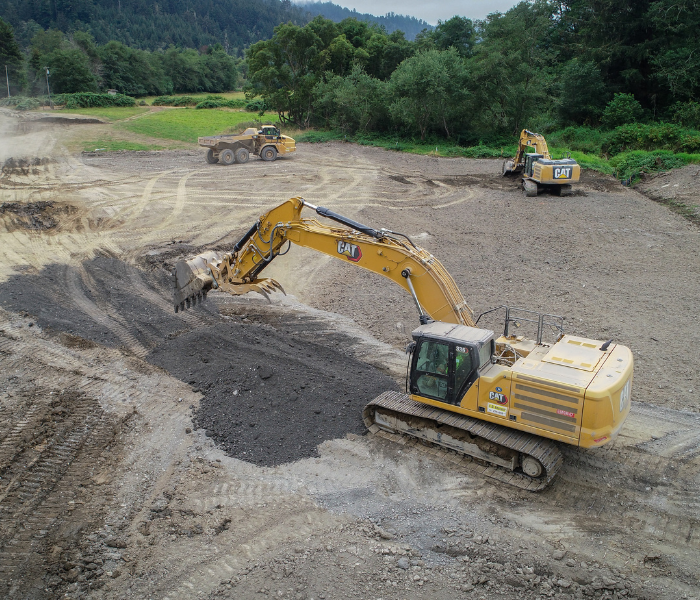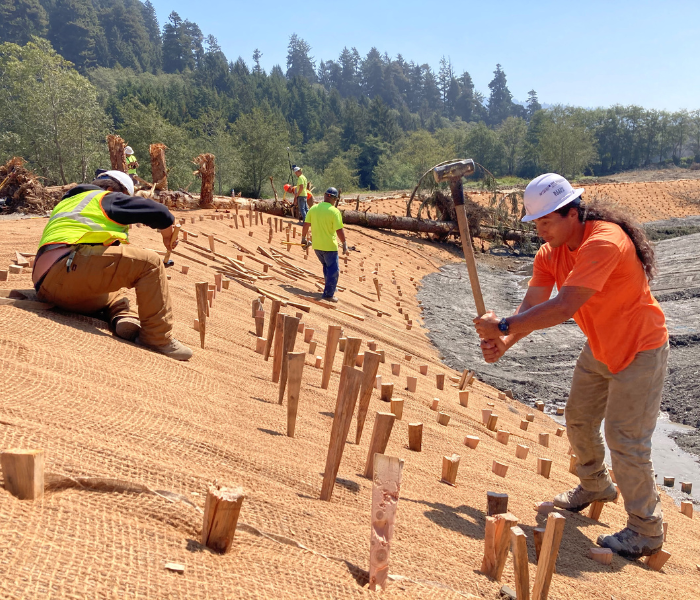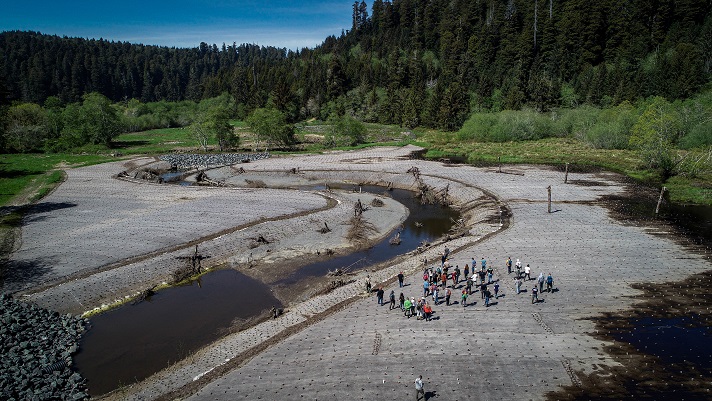We are thrilled to provide an update on one of our most ambitious endeavors in the North Coast region: the Prairie Creek Floodplain Restoration Project as a part of the Redwood National and State Parks Trails Gateway and Restoration Project. This initiative stands as a testament to our skills as effective leaders in collaboration and to our unwavering dedication to ecological restoration.
Along with the rest of our collaborative partner non-profits, state and federal agencies, our team of local design and compliance consultants, and the Yurok Tribe - we are delighted to announce that the project has received a recommendation for $7 million in funding from the National Oceanic and Atmospheric Administration, which will drive the restoration efforts forward to be completed by the end of 2025. The grant will be awarded to the California State Coastal Conservancy, who funds both CalTrout, and the Yurok Tribe. The Yurok Tribe Construction Corporation and Fisheries Department are implementing the design team’s vision - reshaping the creek's channels, removing invasive plant species, and reintroducing native vegetation. Working alongside the Yurok Tribe to restore balance on ancestral lands is an experience that reverberates beyond the project site.

Construction from the 2022 season. By Mike Wier.

The Yurok Tribe Construction Corporation at the site in 2022. By Mike Wier.
Prairie Creek, known for being home to Redwood National and State Parks, has a history of ecosystem restoration and lush riparian habitats and diverse wildlife can be found throughout the watershed. At this site historical impacts are compounded from road building, homesteading, and the mill site developments combined with a heavy sediment load from historical timber harvest practices – the result is a deeply incised channel that severed the connection between the creek and its floodplain. Consequently, habitat degradation occurred and disrupted ecological processes.
Initiated in 2015, the Prairie Creek Floodplain Restoration Project aims to revive critical salmonid rearing habitats, reconnect Prairie Creek with its floodplain, and ultimately rehabilitate the vibrant floodplain and wetland ecosystem. Within Prairie Creek's waters, an array of remarkable species can be found, including Chinook and coho salmon, steelhead, coastal cutthroat trout, and lamprey. The restoration project elevates the habitat quality within this property, contributing to the stronghold upstream that is managed by Redwood National and State Parks.
The vision for the completed project extends beyond the fish. By 2025, the site will also provide a new point of public access—the southern gateway to the Redwood National and State Parks system. To achieve this vision, the excavated soil from the floodplain is repurposed as fill, replacing the mill site asphalt, and laying the groundwork for visitor amenities and trails that will seamlessly connect the site with the surrounding parks.
As we approach the third season of construction in the summer of 2023, we are eager to share further updates on the project's development. Stay tuned for more exciting news as CalTrout and partners continue to restore and rejuvenate Prairie Creek and its floodplain.

A recent tour at the Prairie Creek site. Photo by Mike Wier.





